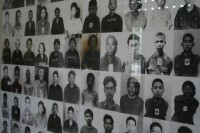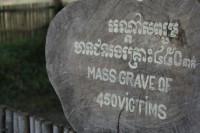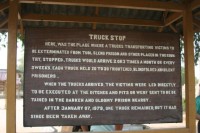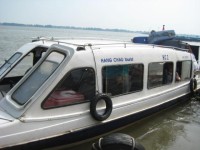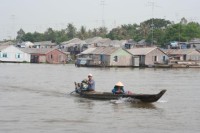Thu 28 Feb 2008
“Wat” a Sight to See
Posted by Derek under Cambodia
No Comments
Angkor, the Sanskrit word for “city,” was by far the largest city in the world in the pre-industrial era, covering an area of over 1,000 square miles. Between 900 and 1200 AD, the kings of the Khmer empire built over a thousand buildings in Angkor, from small, nondescript temples now reduced to rubble to Angkor Wat – the largest single religious monument in the world. When the Frenchman Henri Mouhot came across Angkor Wat in the mid-1900s, he said that the Angkor Wat temple “- a rival to that of Solomon, and erected by some ancient Michelangelo — might take an honourable place beside our most beautiful buildings. It is grander than anything left to us by Greece or Rome, and presents a sad contrast to the state of barbarism in which the nation is now plunged.”
The Khmer empire began its decline in the 14th century ((There are several theories as to the cause of the decline, including repeated invasions by Thailand (its neighbor to the West) and urban mismanagement, leading to an inadequate supply of water for its hundreds of thousands of inhabitants)), ultimately leading to an abandonment of the city in the mid-1400s. Without upkeep, the buildings began to fall apart and to be overtaken by dense jungle. It wasn’t until the early 1900s that a French team began to restore the buildings of Angkor.
After years of war and political turmoil, tourists have descended on Cambodia – usually staying for 1 or 2 days in Siem Reap, a small town only a few miles from Angkor. Last year alone, two million visitors visited Angkor Wat and, considering the tremendous construction of hotels and restaurants in the area, more are expected. ((The growth in Siem Reap has been extraordinary. When I first visited the city in 2004 – just four years ago – there were only a handful of hotels and restaurants.)) For those who make the trip, they will not be disappointed.
We joined the droves of tourists for the obligatory sunrise viewing of Angkor Wat. Arising at 5:30 a.m., we made our way to the pond located to the front left of the temple. In a spontaneous moment of genius, Shanna suggested we get away from the crowds and go inside the temple complex before the masses arrived. Incredibly, no one else had this idea. We entered the deserted temple, snapping pictures with reckless abandon. After a few minutes of blessed solitude, we finally came across two tourists – Virginia Madsen (one of the stars of the movie “Sideways” – she played the character “Maya”) and her son. After a quick conversation and the obligatory photo with a celebrity, we sprinted back to the pond to snap a few sunsrise pictures.
We spent the next two days visiting temples in the early morning and the late afternoon, choosing to relax by our hotel’s pool and avoid the hot, midday sun of Cambodia. ((For those planning on visiting, Angkor is best done in 2 or 3 days, even though most tourists try to see it all in one, exhausting day.  You can get temple-fatigue very quickly, so a more leisurely pace is highly recommended.)) In the evenings, we ate some amazing (and cheap) meals at restaurants that seemed out of place – with the decor and quality that would make many New York and Paris-based diners very jealous.
While many of the temples are worth a long visit, my favorites are obviously Angkor Wat, followed closely by Ta Prohm and the Bayon. In order to give visitors a sense of the state of the temples when first visited by the French explorers in the mid-1800s, Ta Prohm has been left mostly in its condition when found beneath the jungle overgrowth. Literally, trees had overtaken the temple and the distinction between stone and tree becomes blurred. This leads to an eerie quality that was recognized by Hollywood filmmakers and led to the filming of Tomb Raider (starring Angeline Jolie) at the temple.
The Bayon temple, located in the walled city of Angkor Thom, is extraordinary due to the dozens of towers constructed with bas-relief faces pointing in all directions. Each face, considered by many to be the face of Jayavarman – the greatest of the Angkorian kings – has an all-knowing look and a smile that seems content that his legacy, while forgotten by the world for over 500 years, is ensured of never being forgotten again.
[embedplusvideo height=”350″ width=”450″ editlink=”http://bit.ly/1AcAHMa” standard=”http://www.youtube.com/v/4HmoGY6sf04?fs=1″ vars=”ytid=4HmoGY6sf04&width=450&height=350&start=&stop=&rs=w&hd=0&autoplay=0&react=1&chapters=¬es=” id=”ep4399″ /]

